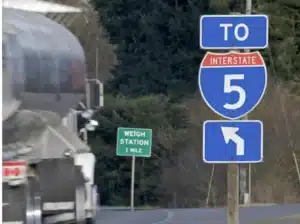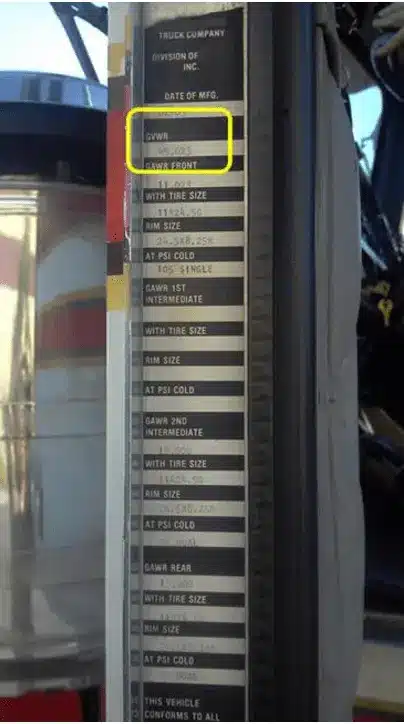What Does GVWR Mean?
GVWR means Gross Vehicle Weight Rating and refers to the maximum allowable weight a vehicle has been engineered by manufacturers to safely carry. This weight rating is regulated by the United States federal government and does not include the weight specs of any accompanying trailers.
 How Does GVWR Get Determined?
How Does GVWR Get Determined?
The Gross Vehicle Weight Rating gets determined by a vehicle’s:
- Body – frame of vehicle
- Chassis – main supporting area of vehicle
- Cargo – the load being hauled
- Driver
- Passengers
- Optional accessories – attachments for sleeping, etc
- Vehicle fluids – fuels, oils, etc
- Tongue – the hitch that connects the trailer to the vehicle
- Other factors specific to each manufacturer
It is important to note that the GVWR value does not change. It is an assigned and permanent weight value unique to each vehicle. The actual vehicle weight is known as the Gross Vehicle Weight (GVW) and should never exceed the truck GVWR assigned by the manufacturers.
Where Do I Find My Truck GVWR?
This number can normally be found on a label inside the door frame of the vehicle.
Different Weight Classifications for Truck GVWR
The GVWR for most standard passenger vehicles is 6,000 lbs (2,700 kg). Vehicles exceeding 8,500 lbs (3,900 kg) will require the driver to carry an additional form of insurance.
When vehicles like big rig trucks exceed 26,000 lbs. (11,800 kg), they fall into the GVWR category of requiring a Commercial Driver’s License (CDL). This also applies to all vehicles, regardless of weight, transporting hazardous materials, and to passenger vehicles or buses carrying 16 or more passengers.

Why Does Gross Vehicle Weight Rating Matter?
Complications arise when a truck or vehicle gets loaded past the recommended GVWR. Brakes and tires are designed with weight limits in mind. Too heavy a load equals not enough brake power to slow or stop the vehicle and an inevitability of tire blowouts. Safety remains the top priority when assigning a GVWR to a vehicle.
Related Terms
Gross Vehicle Weight (GVW)
This is the vehicle’s actual weight with all passengers, drivers and cargo accounted for. Drop off a passenger and you will have just changed your vehicle’s GVW.
Gross Combination Weight Rating (GCWR)
GCWR = Tractor GVWR + Semitrailer GVWR
Add the GVWR together for the separate units of the tractor and the semitrailer hitched to it and you get the GCWR, the maximum weight manufacturers have assigned as safe to carry by a specific combination of vehicles.










